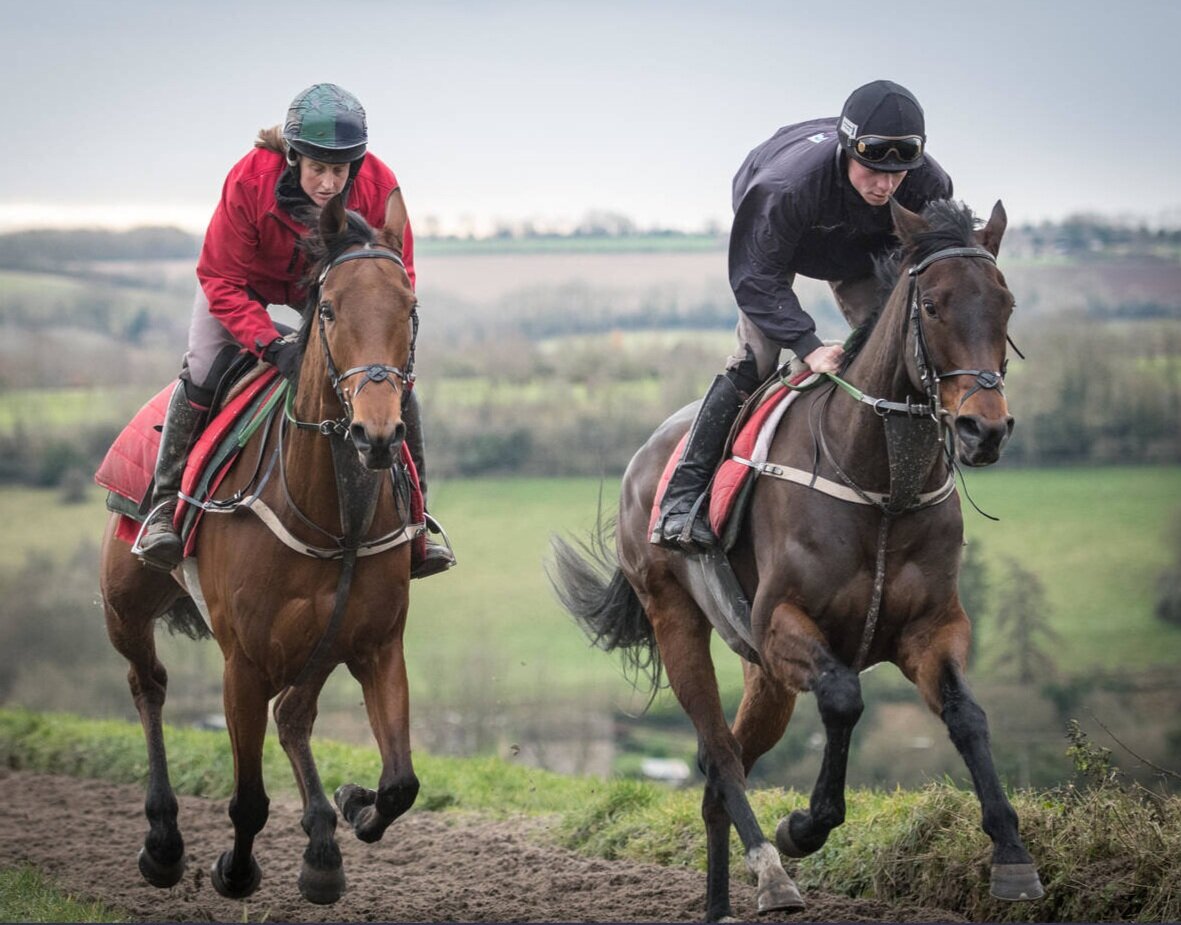How breastplates and breast girths can inhibit performance
By Dr Russell Mackechnie-Guire
Using pressure mapping and gait analysis technology, scientists have now measured how breastplates and breast-girths can compromise the horse’s jump and stride at gallop.
Breast girths and breastplates are routinely used to prevent the saddle moving backwards at home on the gallops, and on the track. Post-race bruising to the pectoral muscles, sternal abrasions, soreness and even lacerations caused by a breastplate are often accepted consequences of keeping the saddle in place. But evidence is mounting that, in addition to the physical factors, a poorly designed breastplate or badly fitted breast-girth could also be restricting the horse’s gallop and compromising its jump during a race, therefore impacting the horse’s locomotor efficiency, performance and athletic potential.
Recent research in the sports horse has demonstrated that breastplates have a significant negative effect on the horse’s action over a fence. A further pilot study looking at how breast girths and breastplates affect the racehorse indicates that they influence the movement of the shoulder and forelimbs whilst galloping, potentially comprising gallop efficiency.
Jumping short
PIC 1– Pliance pressure mapping revealed the point of peak pressure common to all breastplates in the test occurred at the point of take-off.
In the sports horse jumping study, scientists used Pliance pressure mapping (pic 1) to identify areas of peak pressure beneath traditionally fitted breastplates. A sensor mat placed between the breastplate and the horse’s skin recorded levels of pressure throughout the jump cycle. Regardless of breastplate design, the highest pressures were consistently seen in the centre of the chest (located on the midline over the sternal region), at the moment of take-off as the horse’s shoulder, elbow and knee were flexed and the shoulder was in its most forward position (point P, pic 2).
PIC 2 - Without a breastplate (top), the horse’s jump forms a smooth parabolic trajectory over the fence from take-off to landing (A).
Alongside pressure mapping, two-dimensional gait analysis was utilised to determine how pressures created by breastplates affected jumping technique. Markers were placed on the horse’s joints, and the horse’s jump was analysed at a rate of 300 frames a second—approximately 25 times faster than the human eye. The data quantified any changes in joint and limb angles. The findings demonstrated that the whole jump is adversely affected by the breastplate design and resultant pressures from the point of take-off to, and including, the stride immediately after landing.
Without a breastplate, the horse’s natural jump is a parabolic (symmetrical) curve, with the highest point an equal distance between take-off and landing. In the study, a breastplate was shown to shorten the horse’s landing position by 0.5m compared to landing with no breastplate.
With a breastplate (bottom), the horse’s lead foot makes contact with the ground much closer to the fence (B), and the landing phase of the jump is steeper.]
This pattern of an altered trajectory was scientifically recorded under experimental conditions over one single oxer fence (1.2m) on a level surface. Applying the same principles to the racehorse, the negative impact that this would have when galloping would be magnified. If the horse’s trajectory over a brush fence is shortened by the same distance as it is over a 1.2m jump, this is likely to have a significant effect on gallop efficiency—in particular stride rate, length and frequency. Over a course of 12 National Hunt fences, if half a metre of ground is lost (as a function of the altered landing trajectory) at every jump, this would require six metres to be made up over ground—potentially the length of a winning stride.
Crash landing….
CLICK HERE to return to issue contents.
BUY THIS ISSUE IN PRINT OR DOWNLOAD
4 x print issue and online subscription to European Trainer & online North American Trainer. Access to all digital back issues of both editions.
Your subscription will start with the October - December 2025 issue - published at the end of September.
If you wish to receive a copy of the most recent issue, please select this as an additional order.





